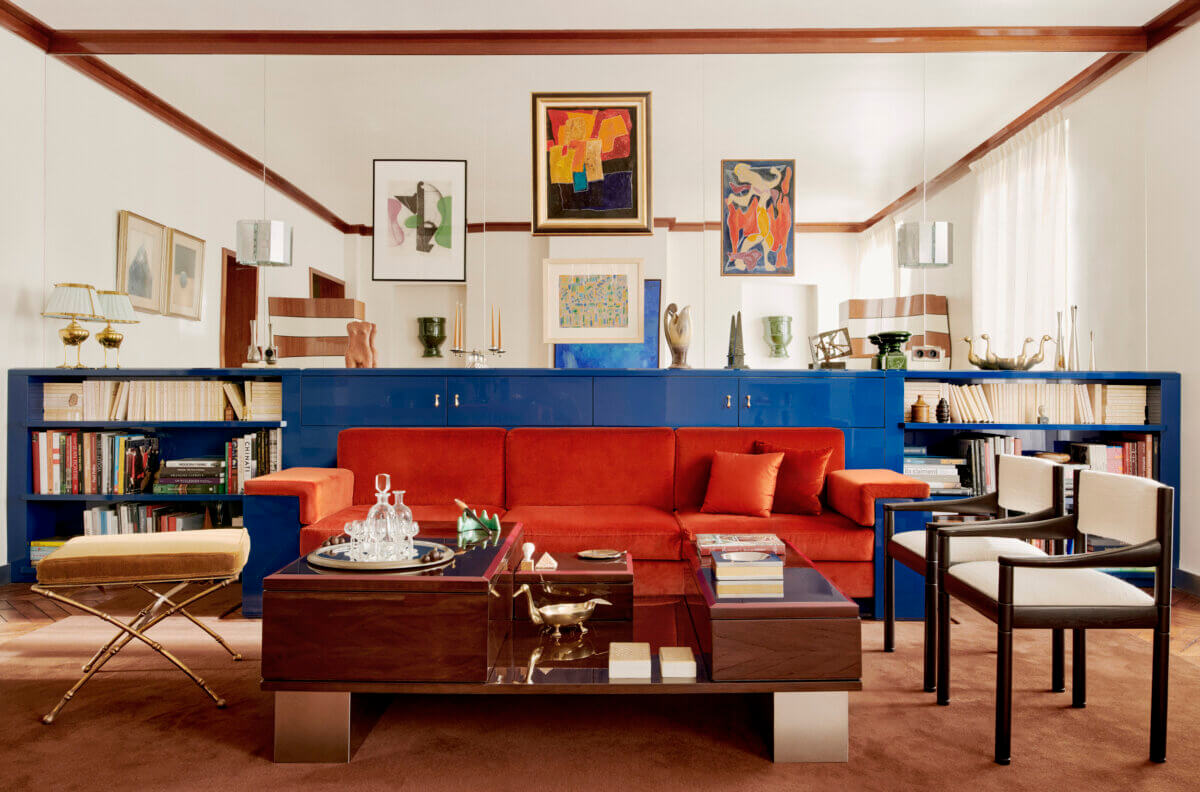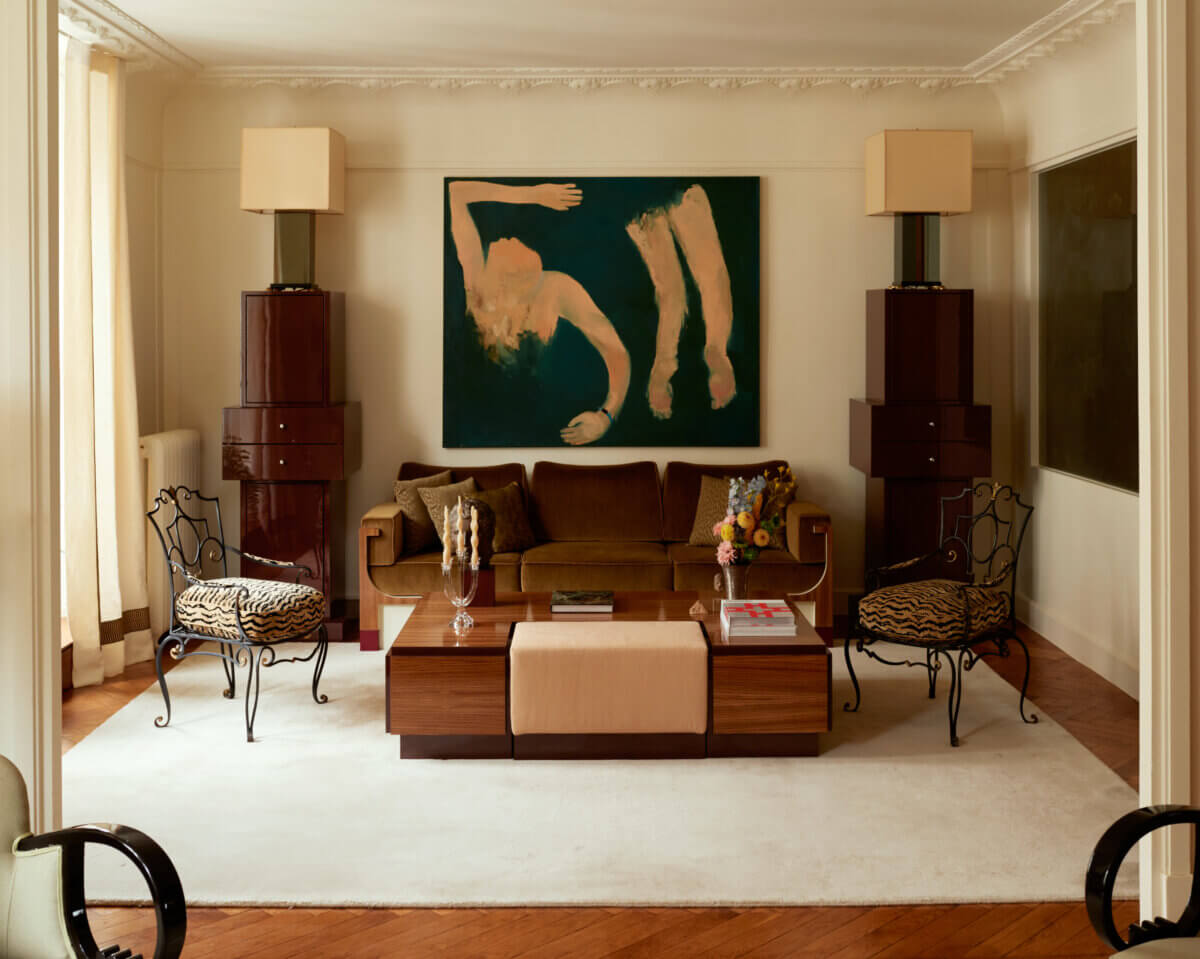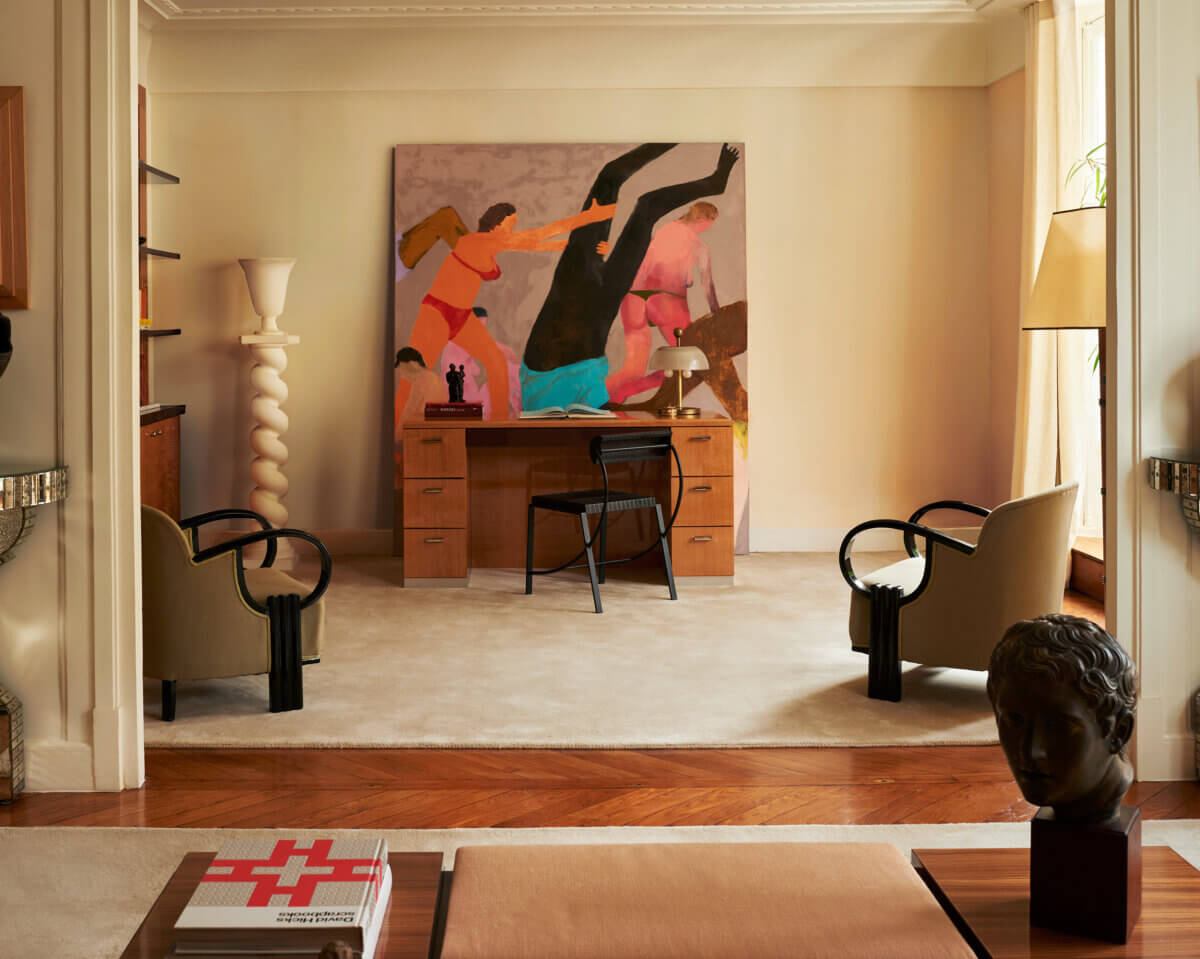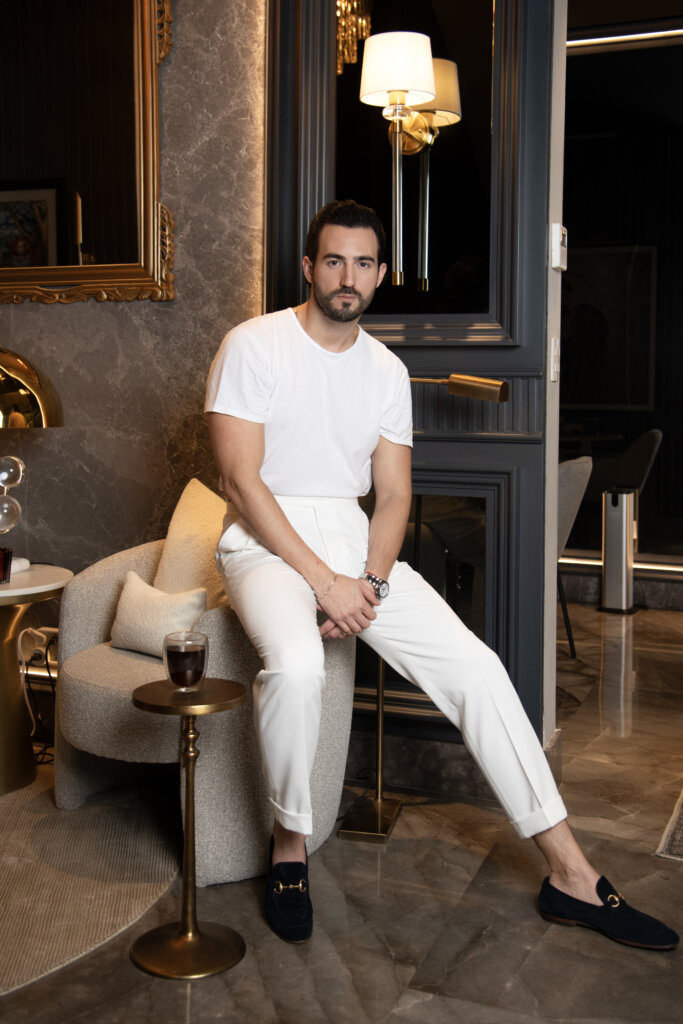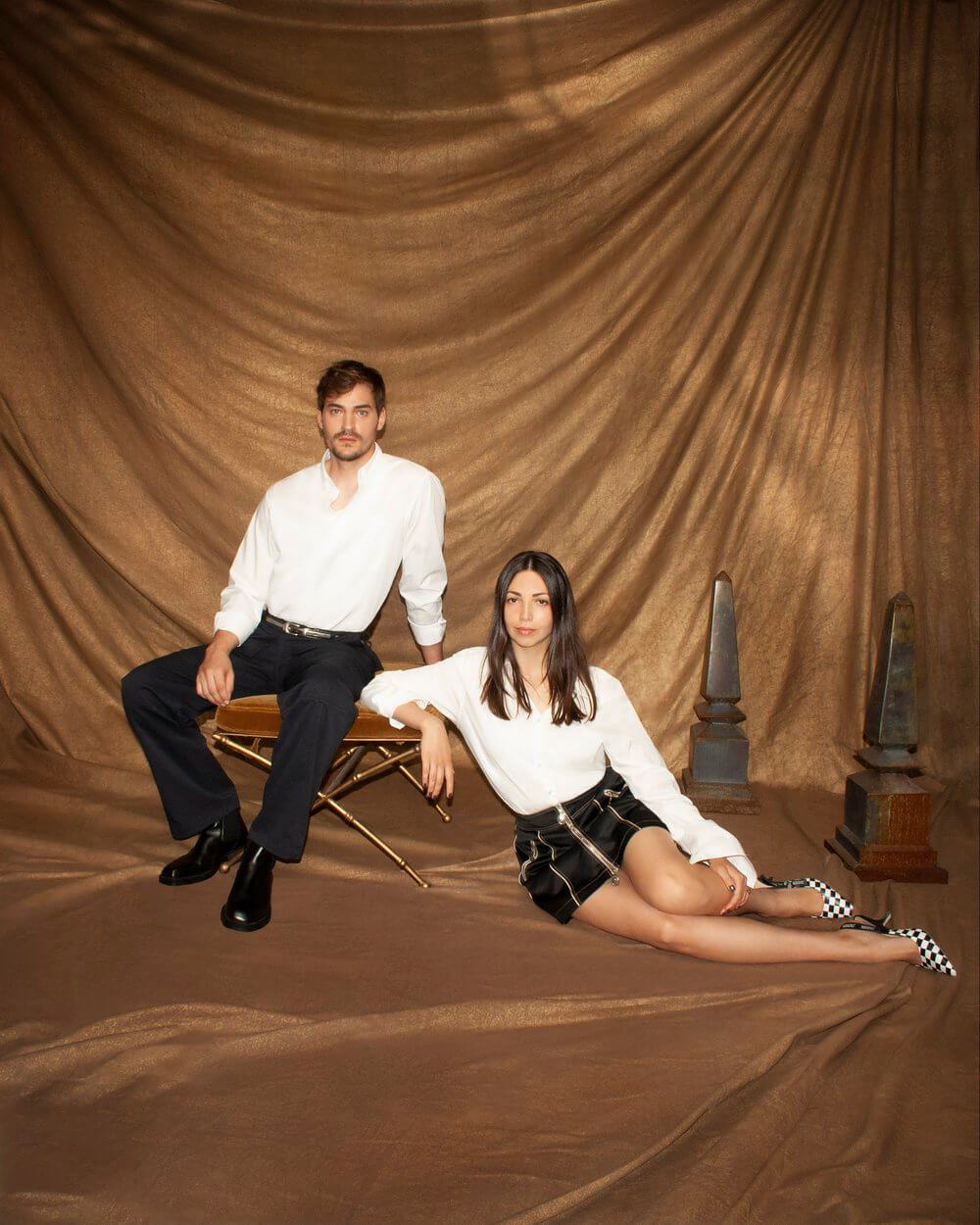
Costanza Rossi and Aurélien Raymond are the Parisian based duo that founded Studio AKADEMOS. Their work experiments with colors and materials and strives to offer a different take on the current interior design trends. Each project is supported by a strong storytelling, backbone of each concept they develop.
Generally influenced by both Café Society era and the glamour of the late 1970s, their interiors are both intimate and flamboyant and always incorporate a touch of sensuality and seduction that translate through the use of reflecting surfaces such as mirrors and lacquer.
When you were a kid, what did you dream of becoming? Did any of those childhood ambitions lead you to where you are today?
Costanza Rossi: When I was a kid, I wanted to be a pianist, inspired by my piano teacher, whom I found so beautiful and elegant. At the same time, I also dreamt of being a parachutist, just like my grandfather had been in his youth. Quite an unusual mix! Looking back, I think I’ve always been drawn to artistic expression while combining it with adventure and travel. I had never really made the connection before, but maybe my career as an architect today is, in a way, a blend of those two aspirations
Aurélien Raymond: I have always dreamt of doing something creative…I played piano for 13 years, had drawing lessons for 6 years…etc. I just didn’t know this liking for creation would lead me to architecture.
Is there a particular designer, artwork, or design movement that deeply inspires you? How has it influenced your own style or philosophy?
CR: The modern architecture movement shaped and refined my taste—it laid the foundation for my aesthetic sensibility. However, when I arrived in Paris, I discovered French decorative arts, which further refined and elevated my style. When it comes to colors and palettes, I always draw inspiration from art. I can be moved by Renaissance paintings from Bronzino or Raphael just as much as by modern and contemporary artists like Rothko.
AR: I am deeply inspired by French designers who worked between the 1920s and 1950s such as Jean-Michel Frank, Marc du Plantier, Jacques Adnet, Gilbert Poillerat or André Arbus. Their work was extremely avant-garde and happened at a time when people were still used to quite ornate interiors, furniture and objects. They redefined every single code.
How would you describe your design philosophy? Has it evolved over time, and if so, how?
AR and CR: Our projects always begin with a story—it can be the history of the place we are working in, blended with the narrative we want to create through our design. This approach allows our clients to truly connect with and make the spaces their own. Our interiors remain timeless, but the furniture introduces contrast, a sculptural presence, and occasionally an element of surprise.
Tell us a bit about where you live: How long have you been there, and how does your environment shape your creative process?
CR: I was born in Italy and studied architecture in Venice. I have been living in Paris for ten years now. I’ve been lucky enough to always be surrounded by beauty every day, all it takes is to look up. Whether it’s the architectural orders of Venetian palaces or the elegance of Haussmannian buildings, my environment has constantly shaped my vision and creativity.
AR: The 9th arrondissement is an area of Paris that has always had a rich history. It was one of the first Parisian neighborhoods of Paris to undergo early major transformations under king Louis-Philippe who drew inspiration from London’s gardens. It was also a place where all the major artists, musicians of the 19th century such as Chopin, Offenbach or Gustave Moreau lived. This neighborhood is a « millefeuille » of architectural styles and hides many secrets if one is curious enough to push doors. I have been living here since 2019 and still discover new elements.
In your opinion, what is the most significant challenge facing the design world today? How do you think designers should respond to it?
CR and AR: The biggest challenge in the design world today is creating designs that are built to last. Our eco-conscious approach aligns with the durability of the furniture and interiors we create.
Our grandparents, even for reasons specific to their time, paid close attention to the quality of their interiors and were willing to invest in beautiful, well-made pieces. Today, this mindset has almost disappeared—we have lost appreciation for craftsmanship and the true value behind each object. We need to return to our roots and shift perspectives. In our view, the key is to consume less but better, in every aspect of life—including our relationship with objects in our interiors. Designers should champion this change by prioritizing quality, sustainability, and timelessness in their work, encouraging a deeper appreciation for artisanal craftsmanship and responsible consumption.
What are you currently working on?
CR and AR: We are currently working on several residential projects in Paris, including a magnificent hôtel particulier located on the Left Bank. Just outside of Paris, we have also begun a château renovation project, where we are overseeing the entire transformation—from architectural elements to interior design, as well as the landscaping project.We are also working on an apartment project in the heart of Manhattan, bringing our vision and pushing boundaries to explore new design possibilities in an urban setting.
What’s a favorite movie, band, or song that has inspired or shaped your creative mind?
CR: It’s very hard to choose, one of my favorite is « A single Man » by Tom ford, I love the aesthetic and the atmosphere.
AR: « Funny Face » with Audrey Hepburn. I adore the colors.
To discover more, visit Studio AKADEMOS and follow on Instagram @studioakademos.
More from ICFF:
Brand Spotlight: Ligne Roset
Preview Brands That Will Be Highlighed at ICFF 2025
Design Showroom Spotlight: Lichen
